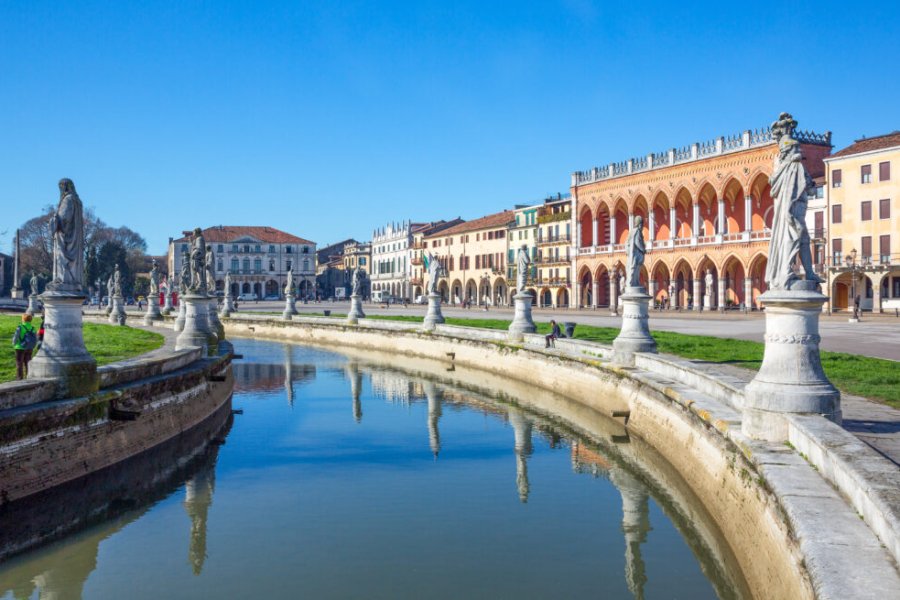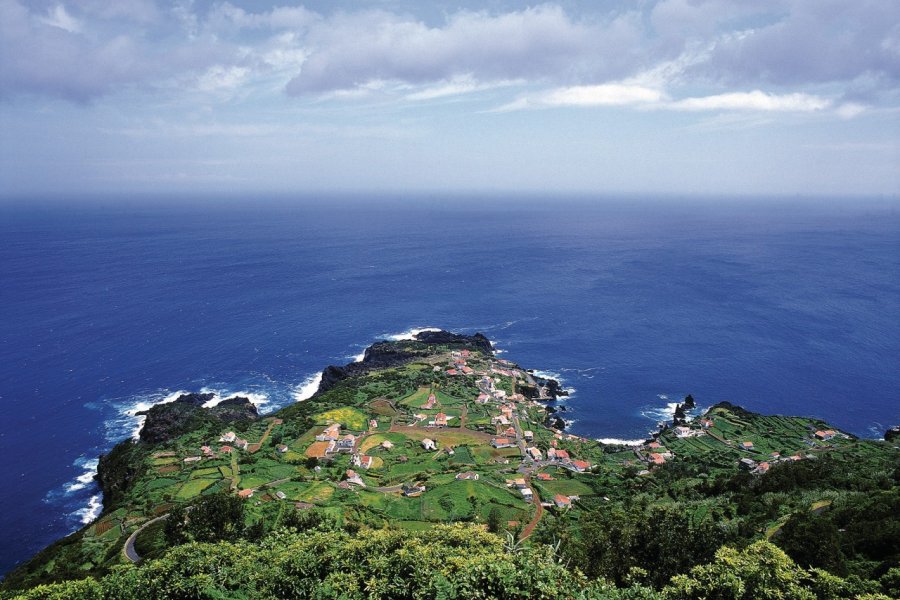Travel Guide São Jorge
Find an accommodation
Advertising
The contours of São Jorge are easily identifiable. The island is a long cliff traversed over its entire expanse by a road close to 800 m altitude. A plane view, São Jorge evokes a large stationary ship that would have chosen its corner of ocean to set the anchor and taste the joys of rest. The @ walker just like Sunday's hiker will find paths to stroll through: perhaps the most beautiful hikes in the Azores are concentrated. Rich and green pastures cover almost all of the island; hydrangeas, heather, ferns and belladones for flowers, chestnut trees, pines, eucalyptus, beech for trees, the lush frame of São Jorge allows to discover fantastic panoramas, from the top of the cliffs whose sides plongent dizzyingly in the sea, or on the fajãs, flat surfaces which stretch up into the ocean and find their origin in the waterfall.The fajãs, the true symbols of the island (46, including 30 on the north coast), originated from volcanic eruptions in the centre of the island, the lava of which spread over the sea, or subsidence of land following seismic tremors. They were transformed into fertile orchards, in fields of the cultivation of yams, maize, vegetables. Coffee, tea and tropical fruits (bananas, pineapple) grow on those that enjoy very favourable microclimates. Fajãs are particularly fertile on the South coast, lower and more exposed to the sun. On the North coast, they are all small and lie in the bottom of the ravines of several hundred metres of depth, some of which contain crystalline water lagoons. Most of these fajãs were abandoned after the 1980 earthquake.In the centre of the island is its youngest part, the chain of summits, the highest of which, the Pico da Esperança, reaches 1 053 m.In the east and in the west, steep ravines are opened. These summits are the ones that quickly turn into impressive waterfalls, the jump of which reaches tens of metres, before blowing on the surface of the ocean.History. The discovery and settlement of São Jorge remains shrouded in mystery. The island was mentioned in 1439. In 1470 small groups of settlers were established on the west and south coasts and the hamlet of Laid had already been established. This is the time when a Flemish noble arrives, Wilhelm Van der Haagen, who founded Topo at the eastern end of the island. Immigration from northern Europe leads to rapid and ephemeral prosperity; the local economy finds opportunities in the vine, wheat, pastel culture and cueillette harvesting. At the beginning of the 1625 th century, the island fell into isolation, but it was neither forgotten by European privateers nor spared the devastating looting of the Turkish and Algerian pirates (in 1580, inhabitants of São João's fajã are captured and enslaved), or even volcanic eruptions (in 1808 in the Queimada area, or in Urzelina).The French chemist Duguay-Trouin, who gave his name to streets in a few cities of Normandy, is considered here as a pirate without faith or law attempting to disembark in Laid at the beginning of the th century. The legends of the island are full of «fierce resistance», and local history retains, on 20 September 1708, the heroic action of Sergeant-Major Soares of Costa who prevented the wicked Frenchman from taking possession of the lands from the inside.In the th and th centuries, trade in oranges and wine fostered more sustainable economic development; many British and American ships favoured the Port of Urzelina to load the Precious loot: there is also a former warehouse, where oranges were stored before boarding.Since then, work has enabled the two major harbours on the island, the two districts, Laid and Calheta, to open more outward, and the opening of an airport has given new economic opportunities. Laid has 2 000 inhabitants to date, and Calheta 800. Rivalry between the two cities is important, and the slightest subject is conducive to debates and challenges. Today, the island is not living with oranges but cattle and dairy products. It makes the famous São Jorge cheese, renowned throughout the archipelago and even on the continent. A taste also: amur vie, aguardente aguardente, distilled in villages.
Suggested addresses São Jorge
Weather at the moment
Advertising
Organize your trip with our partners São Jorge
Transportation
Book your plane tickets
Car Rental
Boat rental
Accommodation & stays
Find a hotel
Holiday rental
Find your campsite
Tailor-made trip
Immersion travel
Services / On site
Activities & visits
Find a doctor
São Jorge travel inspiration
Find unique Stay Offers with our Partners
Pictures and images São Jorge
Other destinations nearby São Jorge
25 km away





